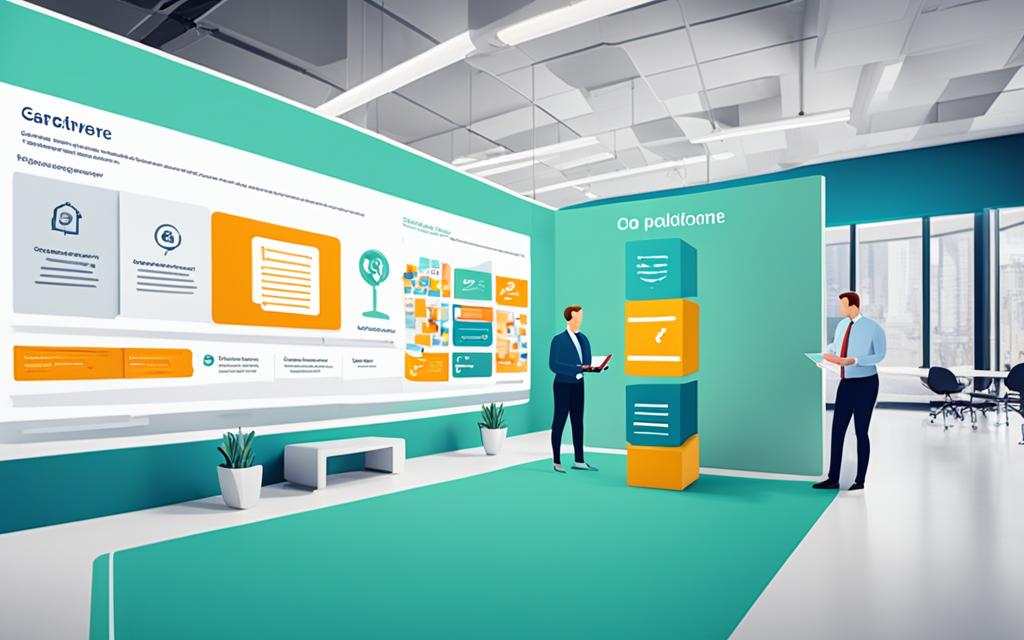- 1. Understanding Lifelong Learning
- 2. Benefits of Promoting a Lifelong Learning Culture
- 3. Strategies for Fostering Lifelong Learning
- 4. Creating a Supportive Learning Environment
- 5. Aligning Learning with Performance Goals
- 6. Continuing Education Opportunities
- 7. Recognizing and Rewarding Lifelong Learners
- 8. Building a Culture of Curiosity
- 9. The Role of Leadership in Lifelong Learning
- 10. Conclusion
- 11. FAQ
- 11.1 What is lifelong learning?
- 11.2 Why is lifelong learning important in the workplace?
- 11.3 What are the benefits of a lifelong learning culture?
- 11.4 How can employers encourage lifelong learning?
- 11.5 What steps can employers take to create a supportive learning environment?
- 11.6 How can learning be aligned with performance goals?
- 11.7 What are some examples of continuing education opportunities?
- 11.8 How can employers recognize and reward lifelong learners?
- 11.9 How can employers build a culture of curiosity?
- 11.10 What is the role of leadership in promoting lifelong learning?
- 12. Source Links
In today’s rapidly evolving business landscape, fostering a culture of lifelong learning is crucial for organizations to stay ahead of the curve. A recent Work Institute report cited career-related reasons as the most important factor for employees leaving their jobs, directly linking to the availability of learning and growth opportunities within the company. As employers, we have a responsibility to provide our workforce with the necessary learning resources and encourage them to pursue professional development both inside and outside the organization.
It’s important to stress that lifelong learning is a voluntary and self-directed process, where employees willingly take on new courses, certifications, online courses, workshops, seminars, and training programs based on their personal goals and interests. This is distinct from continuous learning, which involves mandatory learning programs to upskill and reskill employees. In this article, we’ll explore the benefits of promoting a lifelong learning culture and strategies to support our employees in this endeavor.
Key Takeaways
- A culture of lifelong learning can help organizations meet skill shortages, prepare future leaders, facilitate internal mobility, and reduce the expenses associated with new hiring.
- Investing in a Learning Management System (LMS) creates a centralized repository of knowledge where employees can access learning resources anytime.
- Aligning learning with employees’ performance goals and broader organizational objectives can provide concrete goals and motivate them to pursue learning opportunities.
- Recognizing and rewarding lifelong learners is essential for reinforcing the desired behaviors and attitudes.
- Leadership plays a crucial role in promoting and supporting lifelong learning in the workplace by modeling the desired behaviors and creating a supportive learning environment.
Understanding Lifelong Learning
Lifelong learning is the voluntary and self-motivated pursuit of knowledge for personal or professional purposes. We, as lifelong learners, are more active than passive learners; we plan and evaluate our learning process, learn in different settings and diverse contexts from others, and integrate knowledge from various subject areas using a multitude of strategies when required.
What is Lifelong Learning?
Psychologist Carol Dweck found differences between people’s perceptions of their abilities related to their fixed and growth mindsets. People with a growth mindset are committed to learning, taking every opportunity to try something new, and willing to take risks to gain knowledge and improve their performance and production.
Importance of Lifelong Learning in the Workplace
Promoting lifelong learning opportunities can help organizations meet skill shortages, prepare future leaders, facilitate internal mobility, and reduce the expenses associated with new hiring. By fostering a culture of continuous learning, we can cultivate a skilled, adaptable workforce that drives innovation and stays competitive in the market.
Benefits of Promoting a Lifelong Learning Culture
By fostering a culture of lifelong learning, organizations can unlock a wealth of benefits for both employees and the business as a whole. As we embrace this transformative approach, let’s explore the key advantages it brings to the table.
Cultivate Essential Life Skills
Employees who continuously learn and grow develop a rich skillset that extends far beyond their immediate job functions. They hone critical thinking, adaptability, problem-solving, and other essential life skills that enhance their confidence and self-esteem. This holistic development not only benefits the individual but also strengthens the organization’s overall capabilities.
Stay Competitive
A competent, proactive workforce is the lifeblood of any organization striving to stay ahead of the curve. By encouraging lifelong learning, we empower our employees to fill skills gaps, build new competencies, and perform at their best, even as the business landscape evolves. This agility keeps us one step ahead of the competition, driving superior performance and adaptability.
Promote From Within
Investing in our employees’ continuous development opens up exciting career growth opportunities within the organization. By recognizing and rewarding the new skills and capabilities our team members acquire, we can create dynamic new job titles and promote from within. This virtuous cycle enhances performance and productivity, boosts team collaboration, and reinforces our commitment to nurturing talent from within.
Reduce Employee Attrition
When we demonstrate our dedication to our employees’ personal and professional growth, we foster higher job satisfaction and loyalty. By providing meaningful learning and development opportunities, we reduce the need for our team members to seek out better positions elsewhere, ultimately lowering employee turnover and strengthening our workforce’s stability.
Strategies for Fostering Lifelong Learning
As employers, we can implement various strategies to encourage lifelong learning in the workplace. One key approach is to invest in a Learning Management System (LMS), which creates a centralized repository of knowledge where employees can access learning resources anytime. LMSs support multiple delivery methods, allowing for real-time training sessions, webinars, or a blended learning model.
In addition to providing the right tools, we should also emphasize the long-term and multi-faceted benefits of lifelong learning. By aligning training with our organization’s goals, we can help employees see the bigger picture and understand how their personal growth contributes to the company’s success.
Invest in a Learning Management System
A well-designed LMS enables us to deliver a wide range of learning opportunities, from self-paced online courses to live virtual sessions and hands-on workshops. This centralized platform makes it easy for employees to access the resources they need, whenever they need them, fostering a culture of continuous development.
Emphasize Long-Term Benefits
While the immediate benefits of a training program may be evident, we should consistently highlight the long-term advantages of lifelong learning. By demonstrating how new skills and knowledge can lead to career advancement, increased job satisfaction, and greater contributions to the organization, we can inspire our employees to take ownership of their professional development.
Offer Mentoring and Coaching
Providing mentoring and coaching initiatives can be a powerful way to support our employees’ learning journeys. Experienced professionals can share their knowledge, offer guidance, and help uncover the hidden potential within our workforce. This personalized approach to development fosters meaningful relationships and empowers employees to achieve their goals.

Creating a Supportive Learning Environment
To facilitate employee learning, we must first create a supportive environment that encourages and empowers our workforce to embrace lifelong learning. This involves respecting work-life balance, promoting social learning, and providing on-the-job learning opportunities.
Respect Work-Life Balance
We understand that our employees have commitments and responsibilities outside of the workplace. By setting specific times for learning and development within the work schedule, and ensuring reasonable workloads, we can demonstrate our commitment to supporting their growth without compromising their work-life balance.
Encourage Social Learning
Promoting a culture of knowledge sharing is essential for fostering a supportive learning environment. We can leverage the expertise of our experienced employees through webinars, talks, and mentorship programs, allowing them to share their knowledge and insights with the rest of the team.
Furthermore, we encourage social learning experiences, such as group discussions, collaborative projects, and job shadowing, as these interactive and informal learning environments can spark new ideas and foster a deeper understanding of the subject matter.
Provide On-the-Job Learning Opportunities
In addition to formal training and development programs, we believe in integrating lifelong learning into our employees’ daily work. By providing on-the-job learning opportunities, such as interdepartmental tasks, we can help our team members continuously acquire new skills and knowledge while contributing to the overall success of the organization.
Aligning Learning with Performance Goals
As we strive to foster a culture of lifelong learning, it’s crucial that we align employees’ professional development with their performance goals and the organization’s broader objectives. By working closely with our teams, we can create comprehensive, personalized plans that not only motivate them to pursue learning opportunities but also provide a clear path for career advancement.
Tie Performance Goals to Learning
During regular performance reviews, we’ll encourage open discussions about current skills, areas for improvement, and future aspirations. Based on these insights, we can help employees establish learning and development goals that directly tie into their performance objectives and potential promotions or lateral moves within the company. By creating these tangible connections, we’ll empower our workforce to take ownership of their learning journey and see the direct benefits of their efforts.
Make Learning Inclusive
To ensure that all our employees can access and participate in lifelong learning, we’ll make a concerted effort to provide inclusive learning opportunities. Our course offerings, workshops, and training programs will cater to a diverse range of skill levels, interests, and learning preferences, appealing to individuals across departments. Moreover, we’ll actively solicit feedback from our teams to understand their evolving needs and adjust our learning initiatives accordingly, ensuring that everyone feels supported in their professional development.

Continuing Education Opportunities
Continuing education opportunities, such as online courses, certifications, and training programs, are crucial for fostering a culture of lifelong learning in the workplace. These formal learning initiatives allow our employees to upskill, reskill, and stay competitive in the job market. At our organization, we strive to invest in and promote a wide range of continuing education options to support the diverse learning needs and interests of our workforce.
From cutting-edge online courses on the latest industry trends to globally recognized certifications that validate our employees’ expertise, we are committed to providing an array of opportunities for professional development. Whether it’s mastering a new software program, exploring emerging technologies, or delving into management principles, our continuing education programs empower our team to acquire the skills and knowledge needed to excel in their roles and contribute to our company’s success.
By encouraging our employees to participate in these formal learning initiatives, we not only help them stay ahead of the curve but also demonstrate our dedication to their growth and success. We firmly believe that a well-rounded, continuously learning workforce is the key to maintaining a competitive edge in today’s rapidly evolving business landscape.
Recognizing and Rewarding Lifelong Learners
Recognizing and rewarding lifelong learners is essential for reinforcing the desired behaviors and attitudes within our organization. By acknowledging the efforts and achievements of our employees who continuously seek to enhance their knowledge and skills, we can effectively encourage a culture of lifelong learning.
Offer Certificates and Public Recognition
One effective way to recognize lifelong learners is by offering certificates of completion for the various learning programs and courses they undertake. These certificates not only serve as tangible proof of their accomplishments but also allow them to showcase their dedication and expertise on their professional profiles. Additionally, we can provide public recognition, such as sharing news and congratulating employees on their learning milestones through company-wide channels or during team meetings. This not only celebrates the individual’s growth but also inspires others to follow suit.
Lead by Example
As leaders and managers, it is crucial that we lead by example when it comes to lifelong learning. By continuously seeking opportunities to learn and stay informed about industry trends and innovations, we can inspire our employees to do the same. When our team members witness their leaders actively engaged in learning and development, it reinforces the importance of lifelong learning and sets the tone for the entire organization.

Building a Culture of Curiosity
Fostering a culture of curiosity can further support lifelong learning in the workplace. As employers, we can supplement formal training with informal and “on the side” learning opportunities that fuel our employees’ natural inquisitiveness. By organizing or sponsoring participation in conferences, webinars, and other engaging events, we can provide our team with chances to explore new ideas, network with industry peers, and discover innovative solutions.
Bring Learning into the Organization Indirectly
In addition to structured learning programs, we should create avenues for employees to access a wealth of knowledge from various sources. Establishing RSS feeds, communication channels, or other platforms where people can share interesting news articles, eBooks, podcasts, and other learning resources can help build a culture of continuous learning and knowledge sharing.
Encourage Knowledge Sharing
Fostering an environment that encourages employees to openly share their expertise and insights is crucial for cultivating a culture of curiosity. We can facilitate knowledge-sharing initiatives, such as internal presentations, collaboration-driven projects, and mentorship programs, that allow our team members to learn from one another’s diverse experiences and perspectives.
The Role of Leadership in Lifelong Learning
Leadership plays a crucial role in promoting and supporting lifelong learning in the workplace. As the driving force behind an organization’s culture and values, leaders and managers must model the desired behaviors, continuously seeking opportunities to learn and grow, and passing on relevant information to their teams. By demonstrating a genuine commitment to lifelong learning, they can inspire their employees to do the same, cultivating a culture that values knowledge, innovation, and personal development.
Effective leaders understand that fostering an environment that encourages employees to take calculated risks, experiment, and learn from their mistakes is essential for fostering a culture of lifelong learning. They should empower their teams to explore new ideas, challenge the status quo, and embrace a growth mindset, where failure is seen as an opportunity for growth rather than a setback.
Furthermore, leaders should actively seek to integrate learning opportunities into the daily workflow, ensuring that employees have access to the resources and support they need to continuously enhance their skills and knowledge. This can include providing access to online courses, encouraging participation in industry events, and creating mentorship programs that facilitate knowledge sharing and peer-to-peer learning.
By leading by example and creating an environment that nurtures lifelong learning, leaders can unlock the full potential of their employees, driving innovation, improving performance, and positioning the organization for long-term success in the ever-evolving business landscape.

Conclusion
Lifelong learning is not a passing trend but a critical component of success in the modern, knowledge-driven economy. By fostering a culture of continuous learning, we can cultivate a skilled, adaptable workforce, promote from within, and reduce employee attrition. Implementing strategies such as investing in learning management systems, aligning learning with performance goals, and recognizing lifelong learners can help us unlock the full potential of our employees and stay competitive in the market.
As leaders, it is our responsibility to model the desired behaviors and create supportive learning environments. By doing so, we can empower our employees to take charge of their own professional development, benefiting both themselves and the organization as a whole. Embracing lifelong learning is not just a trend, but a necessity for organizations seeking to thrive in the ever-evolving business landscape.
In conclusion, fostering a culture of lifelong learning is a strategic investment that can yield significant returns in terms of talent retention, innovation, and overall organizational success. By prioritizing the development and growth of our employees, we can position our company for long-term prosperity and position ourselves as an employer of choice in the industry.
FAQ
What is lifelong learning?
Lifelong learning is the voluntary and self-motivated pursuit of knowledge for personal or professional purposes. Lifelong learners are active and take responsibility for their own learning process.
Why is lifelong learning important in the workplace?
Promoting a culture of lifelong learning can help organizations meet skill shortages, prepare future leaders, facilitate internal mobility, and reduce the expenses associated with new hiring.
What are the benefits of a lifelong learning culture?
A culture of lifelong learning can help employees develop essential life skills, keep the organization competitive, facilitate internal promotions, and reduce employee attrition.
How can employers encourage lifelong learning?
Employers can implement strategies such as investing in a Learning Management System, emphasizing the long-term benefits of lifelong learning, and offering mentoring and coaching initiatives.
What steps can employers take to create a supportive learning environment?
Employers can respect work-life balance, encourage social learning, and provide on-the-job learning opportunities to facilitate employee learning.
How can learning be aligned with performance goals?
Employers should tie performance goals to learning, create comprehensive professional development plans, and make learning opportunities inclusive.
What are some examples of continuing education opportunities?
Continuing education opportunities include online courses, certifications, and training programs that allow employees to upskill, reskill, and stay competitive.
How can employers recognize and reward lifelong learners?
Employers can offer certificates of completion, provide public recognition, and lead by example by continuously seeking opportunities to learn and grow.
How can employers build a culture of curiosity?
Employers can supplement formal training with informal learning opportunities, create avenues for knowledge sharing, and foster an environment that encourages experimentation and risk-taking.
What is the role of leadership in promoting lifelong learning?
Leaders should model the desired behaviors, foster an environment that encourages learning, and inspire employees to take charge of their own professional development.
Source Links
- https://www.learnworlds.com/lifelong-learning-in-the-workplace/
- https://360learning.com/guide/learning-theories/lifelong-learning/
- https://extension.psu.edu/establishing-a-culture-of-lifelong-learning-in-the-workplace
